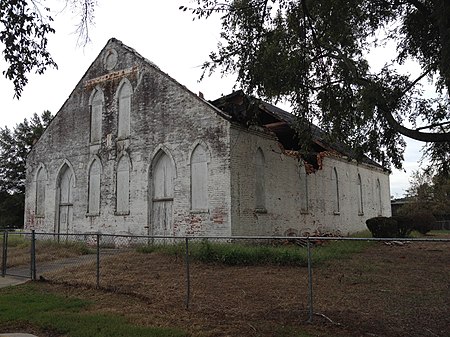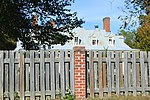Central State Hospital Chapel
Buildings and structures in Dinwiddie County, VirginiaCentral Virginia Registered Historic Place stubsChurches completed in 1904Former National Register of Historic Places in VirginiaGothic Revival church buildings in Virginia ... and 3 more
National Register of Historic Places in Dinwiddie County, VirginiaProperties of religious function on the National Register of Historic Places in VirginiaUse mdy dates from August 2023

Central State Hospital Chapel is a historic chapel located on the grounds of Central State Hospital near Petersburg, Dinwiddie County, Virginia. It was built in 1904, and is a simple, 1 1/2-story brick structure measuring 80 by 50 feet, with a front gable roof and Late Gothic Revival details. The building features lancet window openings.It was listed on the National Register of Historic Places in 2010, and was removed from the National Register in 2017.
Excerpt from the Wikipedia article Central State Hospital Chapel (License: CC BY-SA 3.0, Authors, Images).Central State Hospital Chapel
West Washington Street, Petersburg
Geographical coordinates (GPS) Address Phone number Website Nearby Places Show on map
Geographical coordinates (GPS)
| Latitude | Longitude |
|---|---|
| N 37.207777777778 ° | E -77.452777777778 ° |
Address
Central State Hospital
West Washington Street 26317
23803 Petersburg
Virginia, United States
Open on Google Maps










